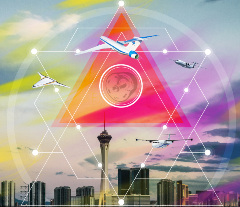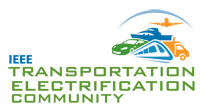Electrified Aircraft Propulsion Technologies: Powering the Future of Air Transportation – Online Short Course (Started 14 Oct 2020) 14 October - 11 November 2020


- From 14 October – 11 November 2020 (4.5 weeks, 9 Lectures, 18 Hours)
- Every Wednesday and Friday at 1300-1500 Eastern Time (all sessions will be recorded and available for replay; course notes will be available for download)
- A joint course with the IEEE Transportation Electrification Community, bringing together the premiere experts from both AIAA and IEEE.
- All students will receive an AIAA Certificate of Completion at the end of the course
- It's not too late to register! Catch up on any missed lectures on-demand!
Overview
This joint AIAA/IEEE online course describes the benefits of electrifying the propulsion systems of large aircraft, identifies the technology advancements required to enable electrified aircraft propulsion, and details how the aerospace industry can transition from the current state-of-the-art to these advanced technologies. It covers electrical machines, power systems and electronics, materials research, superconductivity and cryogenics, thermal management, battery chemistry, system design, and optimization. Rather than delving too deep into any specific technical area, it covers general concepts, tools, and information, and offers the learner a solid high-level understanding of the material. The course’s primary objective is as an introduction and launching point for deeper study.
Learning Objectives
· Understand the benefits of electrified propulsion in aircraft
· Identify types of electric and hybrid-electric propulsion systems and their relative advantages and disadvantages
· Understand the fundamentals of electromechanical energy conversion and performance parameters
· Understand fundamentals of enabling power electronics
· Understand the key drivers of electrical machine and drive designs
· Become familiar with emerging technologies, e.g. superconductivity, cryogenic power electronics
· Have a basic understanding of electrical power distribution architecture and the general considerations for the protection system design
[Detailed Outline Below]
Who Should Attend
The course is intended for technology and management professionals, students, and policymakers who want to understand the underlying technologies and the unique design considerations for electrifying the propulsion of large passenger-class aircraft.
Lecture 1 – Case for Electrifying Large Electric Aircraft (Dyson, 14 October)
o This module details the benefits of electrified propulsion for large aircraft
o Trade studies and analyses of several concept vehicles are summarized
o A first-order breakeven analysis that reveals the electrical power system requirements that enable several electrified aircraft propulsion architectures is presented
o A framework for comparing electric drive system performance factors, such as electrical efficiency, in the context of electrified and traditional propulsion systems is provided
o Expectations for electrical system component requirements is provided, setting the stage for the component focused modules
Lecture 2 - Performance Assessment of Hybrid Electric Aircraft (Gladin, 16 October)
o This module covers how to assess whether new powertrain architecture can “buy its way” onto an aircraft, and when, specifically, the architecture becomes physically and economically viable.
o Assessment Process: Introduction and steps in the process
o Baselining: Projecting the baseline forward, defining EIS and technology level (TRL considerations), defining propulsion technologies
o Defining the EP concept: Schematics/Representations, EP architecture conceptualization and review of basic trades, morphological matrices, defining a CONOPS – Examples, electric technology infusion
o Propulsion system modeling and representation: Schematics, review of components, Standard performance parameters and definitions, units, nomenclature, etc.
o Vehicle modeling and representation: Standard parameters to declare, Mission(s): Flight segments, Power management, Guidelines for presentation of results
o Calculating metrics: Energy specific air range, Fuel burn, Energy, ICAO CO2, Life-cycle CO2, TOFL, energy, DOC, NOx, etc.
o Example Assessment Results
Lecture 3 – Electric Power System and Protection (Bayles, 21 October)
o This module will describe the detailed considerations related to the design of safe, reliable, interconnected electrical power system in the aircraft
o It will introduce the basic features of the electric power system and summarize its design as well as its control, and protection functions.
o Implications of the expected increase in power levels (of generation, distribution, and loads) required for the electrification of propulsion systems will be examined.
o An overview of power quality requirements is provided.
o Key components of the electric power system and their functions are described to prepare for the discussions of individual system components that follow in subsequent modules.
Lecture 4 – Conventional Electric Machines (Xiaolong Zhang, 23 October)
o A comprehensive overview of conventional large electrical machines for electrified aircraft applications is presented in this module.
o Major design challenges associated with high specific power MW-scale machines are identified, and approaches for mass reduction and specific power improvement are described.
o A review of EAP powertrain architectures and how high specific power electric machines enable them is provided.
o A description of motor and generator systems, with a focus on propulsion motors, high speed generators, and system considerations unique to the EAP powertrain is provided.
o Design principles for high power, lightweight, MW-scale EM development are discussed.
o A comprehensive survey of over 50 SOTA HSP machines is presented and common features of HSP machines are identified and promising options for further weight reduction are discussed.
Lecture 5 – Superconducting Machines (Haran, 28 October)
o This module covers superconducting technology which enables elimination of Ohmic losses at cryogenic temperatures, significant increases in power density.
o The physics of superconductivity is introduced and the important considerations relevant to superconducting machine design for electrified aircraft propulsion is covered.
o Various superconducting machine topologies being pursued by different research groups are described, including the current state-of-the-art.
o A detailed assessment of specific challenges related to electrified aircraft applications – ‘ac’ losses in the superconducting coils and the need for compact cryocoolers – is provided.
o The physics and advantages of superconducting cables are also presented, along with a look at future superconducting technology trends
Lecture 6 – Conventional Power Electronics (Wheeler, 30 October)
o This module introduces general power conversion concepts while fostering a solid high-level understanding of power electronic converter topologies.
o Topologies and devices that are crucial for electrified aircraft propulsion will be described.
o Power system metrics, including power density and voltage, and integration techniques are presented.
o A description of relevant power converter topologies, including two- and multi-level inverters, direct and indirect matrix converters, rectifiers is provided.
o Power converter topologies for open winding and multi-phase electric machines, and fault-tolerant topologies will also be described.
o The module concludes with a discussion on emerging semiconductor devices and materials, including a discussion and comparison with silicon-carbide (SiC) device options.
Lecture 7 – Cryogenic Power Electronics (Zhang, 4 November)
o This module introduces cryogenic power electronics that can enable the highly efficient ultra-dense power conversion systems which are critical for EAP.
o Several key steps in the development of cryogenic power electronics, from the component up to the converter level is presented.
o The characterization of critical components – including power devices and magnetics – at cryogenic temperature is introduced to establish the basic knowledge necessary for cryogenic design and optimization.
o Special considerations specific to cryogenic design, and trade and design studies for the cryogenic power stage and filter electronics are detailed.
o An example of a high- power cryogenically-cooled inverter system for an EAP application is illustrated, with safety considerations and the protection scheme highlighted.
Lecture 8 – Electrochemical Energy Storage and Conversion for Electric Aircraft (Misra, 6 November)
o This module provides an overview of electrochemical energy storage and conversion systems for electrified aircraft propulsion.
o An overview of the state-of-the-art in battery technology and of the various EAP concepts and missions it enables is provided.
o A review of battery technology requirements for various classes of electrified aircraft and EAP concepts.
o Recent battery technology advances and their applicability and limitations for expanding the electrified aircraft market.
o Application of fuel cells, flow batteries, and supercapacitors for electrified aircraft.
o A review of multifunctional structures with energy storage capability and their potential application to EAP.
Lecture 9 - Thermal Management System (Lents, 11 November)
o This module details aerospace thermal management system approaches and the unique challenges of managing electric drivetrain waste heat across the wide variety of electrified aircraft propulsion architectures.
o Thermal management system component design and performance
§ Heat acquisition – component temperature limits; cooling technologies and approaches for moving heat from component source load to the cooling medium; also includes heat pumping systems for moving heat from a heat source at lower temperature than the heat sink
§ Heat transport – guidelines for estimating weight and power consumption of pumps, fans, ducts, and pipes
§ Heat rejection – methods for sizing heat exchangers, phase change materials, and skin coolers
o Methods for estimating the impact of TMS weight, power consumption and induced ram drag on aircraft performance
o Example thermal management system implementations
o Full system model examples to introduce general analysis concepts and heat transport and rejection components, including the underlying physics-based equations necessary for their analysis.
o The detailed step-by-step design of a reference TMS, listing constraints, imposed conditions, methods for estimating free parameters, calculated values, and design trade considerations.
The course lectures will be delivered via Zoom. You can test your connection here: https://zoom.us/test
Access to the Zoom classroom will be provided to registrants near to the course start date.
All sessions will be available on-demand within 1-2 days of the lecture. Once available, you can stream the replay video anytime, 24/7.
All slides will be available for download after each lecture. No part of these materials may be reproduced, distributed, or transmitted, unless for course participants. All rights reserved.
Between lectures, the instructors will be available via email for technical questions and comments.
Mr. Bob Bayles is Senior Fellow Engineer- Systems at Collins Aerospace.He has been part of the Collins Electric Power Systems business for 40 years and is involved with many of the innovations associated with development of generation, conversion, and distribution of electrical power systems on multiple aircraft platforms. Currently Bob is leading the high power / electric & hybrid electric propulsion technology roadmap for Raytheon Technologies. Bob holds a Bachelors and Master’s degree in electrical engineering, and a Master’s degree in business administration. He holds 4 U.S. patents.
AIAA Training Links
For information, group discounts,
and private course pricing, contact:
Lisa Le, Education Specialist (lisal@aiaa.org)
